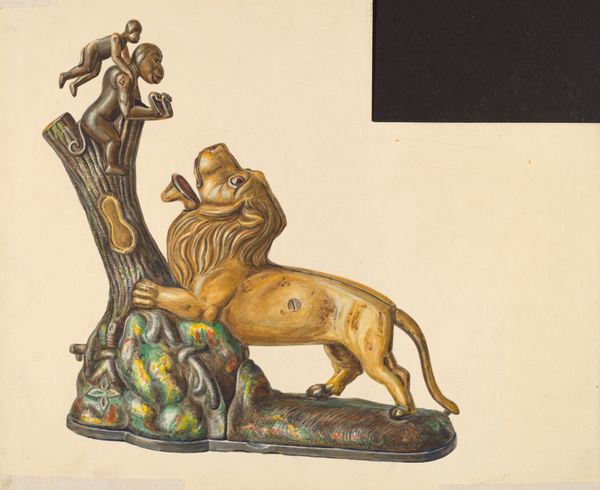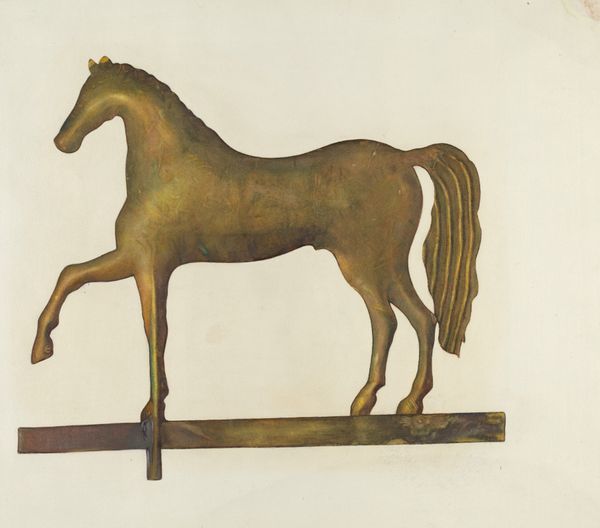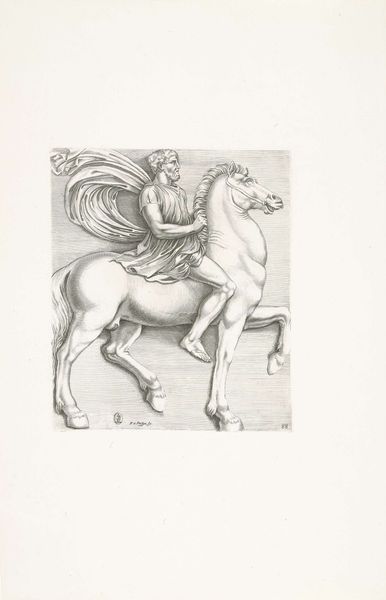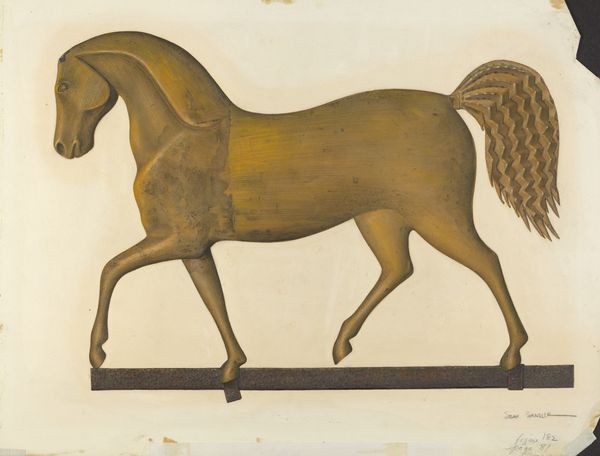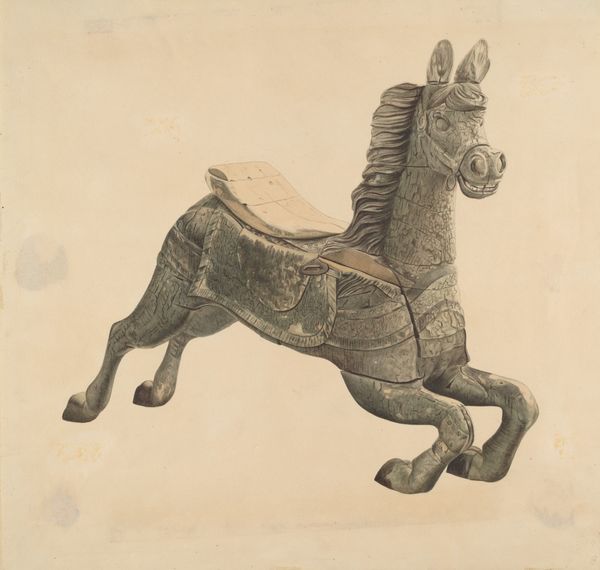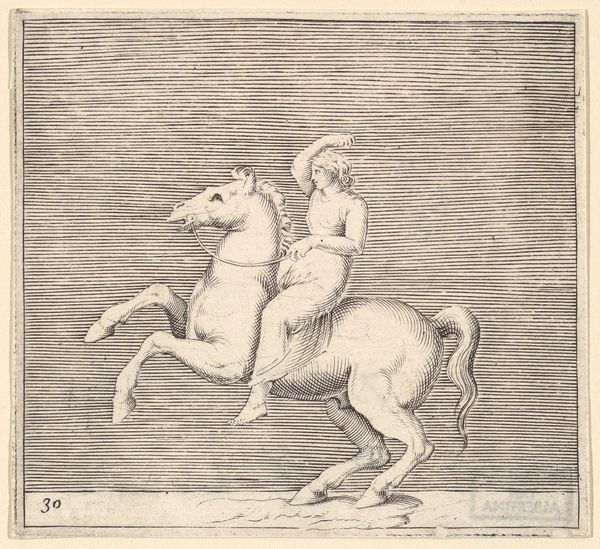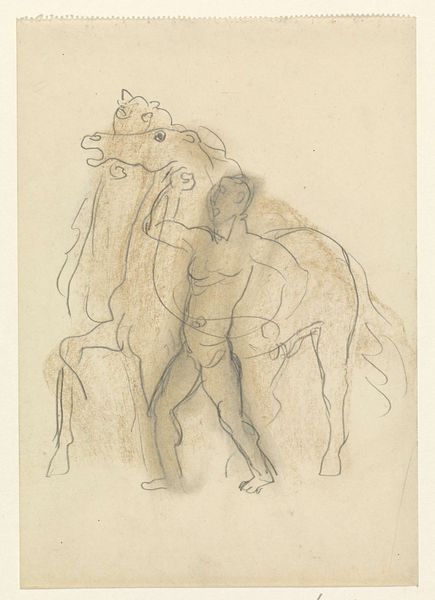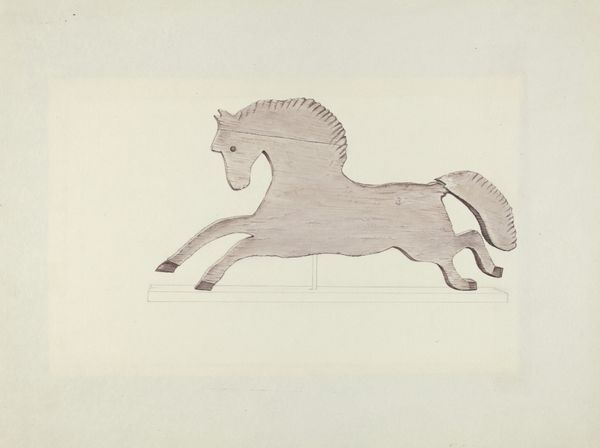
drawing, lithograph, print
#
drawing
#
lithograph
# print
#
greek-and-roman-art
#
landscape
#
figuration
Dimensions: 580 mm (height) x 710 mm (width) (bladmål)
Curator: This is Marie Henriques' lithograph from 1911, titled "Archaic Greek Equestrian Statue (Athens)." Editor: It's... unexpected. Almost ghostly, with that faded palette and disembodied rider. It's like a dream fragment of antiquity. Curator: Precisely! The ghostly quality might stem from Henriques' engagement with classical motifs viewed through a modern lens. Notice how she renders the statue not as a triumphant monument, but as a fragile echo. Editor: It’s more like a toy than a hero. I get a strong feeling of memory from this; like finding a forgotten plaything in an attic. Is that deliberate? Curator: The visual symbolism suggests so. The horse itself, rendered in soft lines, could represent power and nobility, certainly. But with the rider truncated, focus shifts from the grand narrative to something more personal, questioning the traditional associations with these archetypes. We could even see that single foot as an explicit sign of powerlessness. Editor: I like that take. The rider’s posture, or lack thereof, subverts expectations of ancient valor. The blue tint in the horse’s mane, too— such an unnatural color draws immediate attention, turning something historic almost surreal. Why that detail? Curator: It draws our attention back to the work's constructed reality, away from simple documentation and toward a symbolic interpretation. The print medium also distances us from the monumental sculpture it's representing. This allows the artist to create layers of meaning that speak beyond the original intent. Editor: So it becomes a study, perhaps even a critique of how we perceive classical ideals now? Curator: Indeed. Henriques encourages us to look past surface grandeur and consider the more profound, sometimes melancholic implications of history itself. Editor: The artist really plays with visual language here. The work certainly prompted me to reconsider my preconceptions about ancient statuary. It becomes something very modern, about memory, representation, and loss. Curator: A fine illustration of how artists reinterpret cultural relics, offering pathways to understand our relationship with history.
Comments
No comments
Be the first to comment and join the conversation on the ultimate creative platform.

